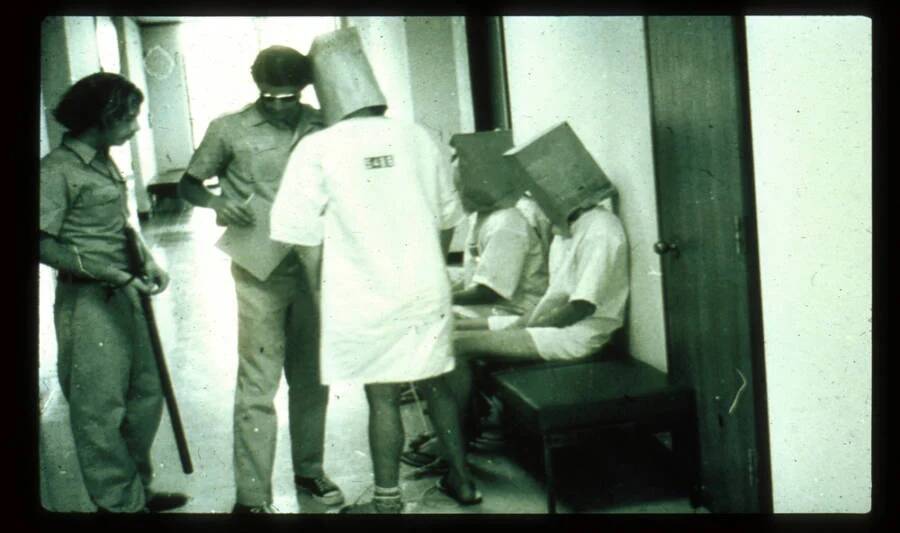The Stanford Prison Experiment (1971)

PrisonExp.orgThe Stanford Prison Experiment sought to gain an understanding of how prisoners interacted with their guards.
In 1971, Stanford psychologist Philip Zimbardo received a grant from the U.S. Navy and Marine Corps to conduct a psychological experiment that would ideally help them to gain a deeper understanding of the interactions and dynamics between prison guards and inmates in prison.
To conduct this study, now known as the Stanford Prison Experiment, Zimbardo gathered two-dozen young men in Stanford University’s Jordan Hall. Zimbardo and his colleagues had converted the building’s basement into a mock prison, of which Zimbardo would be the “warden.” He randomly assigned each of the young men a role: inmate or guard.
On August 13, 1971, the night before the experiment began, Zimbardo laid down the rules for his dozen guards. They were to provide round-the-clock supervision of the inmates, broken up into three eight-hour shifts. They were equipped with military-surplus khakis and wooden batons.
They were ordered not to hit the inmates. However, they were also told that they would have wide discretion in how they treated the prisoners.
The first day of the experiment was relatively uneventful, but that night, the guards decided to punish some inmates by taking the mattresses out of their cells and making noises to disrupt their sleep.
By noon of the second day, one of the inmates had a breakdown and was released from the study — but not before a mock parole hearing and an extended stay in “solitary confinement” (which was really a broom closet).
Then, the other inmates began to rebel. They started to disobey guards’ orders and several had barricaded themselves in their cells. It was, in essence, a revolt. And though guards were free to go home at the end of their shift, many stayed overtime to suppress this revolt.
Once the clinical staff observing the experiment left, guards began to blast fire extinguishers at the inmates, overcrowded their cells, and forced them to go to the bathroom in buckets, then dumped the buckets out in their cells. They forced inmates to stand naked for hours in uncomfortable positions and locked them in “solitary” for long periods of time.
By day three, Zimbardo noted that about one-third of the guards were showing signs of genuine sadism. But Zimbardo himself had also become disturbingly immersed in the psychology experiment, and his objectivity was gone. He trapped himself in his own dark fantasy. And by day four, some of the inmates were suicidal and losing their grip on reality.
The psychology experiment only came to an end on day six, when Zimbardo brought his girlfriend into the mock prison as an observer, and her shock and disgust served as a wake-up call for Zimbardo. He announced that the experiment was over. Though the experiment’s results ultimately had a profound impact on the American prison system, it also served as a bleak example of the depravity to which people can be pushed.





